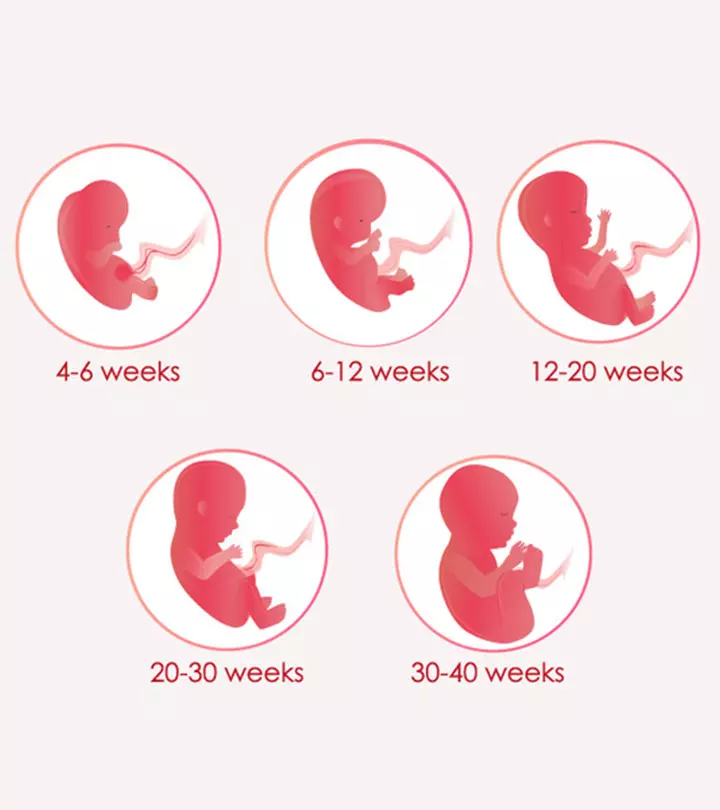
Image: Shutterstock
And, we’re on the home stretch now. And, as we reach the end of our pregnancy, so let’s take a look at what happens in the last few weeks leading up to the big day.
Week 37
Your baby’s head at this point is nestled in your pelvic cavity, which is protected by the surrounding pelvic bones. This position allows your little one some space, which is much needed for the legs and bum.
Your baby may have a head full of hair, or it may not have hair at all. That being said, the coat of lanugo (mentioned previously) that covers your baby in week 26 onwards, now disappears along with most of the vernix caseosa (whitish substance also mentioned previously). Slightly weird, but your baby actually swallows both the lanugo and substance and stores them in the bowels. This essentially is the baby’s first poop.
Week 38
Scans aside, there’s a way to tell if you’re having a boy or a girl. Some say that you can guess based on the size of your baby. For example, girls tend to be lighter than boys. So during this week, an average baby weighs at around 3 to 3.2 kgs, so you can hazard a guess.
All the organs are fully developed, functional, and in place. However, the lungs are usually the last to reach full maturity. For instance, even after birth, it can take a few hours for your newborn to regulate its breathing pattern.
Week 39
This week onwards, you’ll have to play the waiting (and watching) game because your little one can pop out any day. The thick white substance mentioned above disappears even more, which causes the once clear amniotic fluid to appear milkier. The baby’s outer skin layers being to peel off because new skin begins to form underneath.
If your baby has hair on its head then it is now pretty thick and so are the fingernails. The bones in the skull are yet to fuse, which can result in them overlapping once the baby goes through the birthing canal. This is why newborns can have a cone-shaped head.
Week 40
Don’t panic, but this is when your due date has probably gone by, which is very normal. It is frustrating, but you’re not alone because plenty of women go through it.
Just know that your baby is comfortable and is just taking its sweet time to come out. Many babies tend to arrive on a date that isn’t their due date. If there’s no update for another couple of weeks then make an appointment with your doctor. Meanwhile, the vernix caseosa that protects your baby’s skin finally disappears. If the baby isn’t born for another week or so, it may have dry skin when it’s born because there’s no longer a substance to protect the skin.
On the bright side, your baby has all the skills needed for the big day!
Here’s a quick fun fact – if you’re wondering what eye color your baby will have, keep in mind that the eye color that you see RIGHT after birth will change because of the exposure to light. Depending on the exposure and extent, the light will change the initial eye color. The actual eye color can take weeks and even months to appear. For example, European babies are born with blue eyes that can eventually turn brown, green, gray, or blue. African and Asian children on the other hand are born with dark gray or brown eyes, which change a few months after birth.
So there you have it! A week-by-week time line of what goes on inside a mommy to be’s womb. We hope this information came in handy, but keep in mind that it’s more of a guideline.












